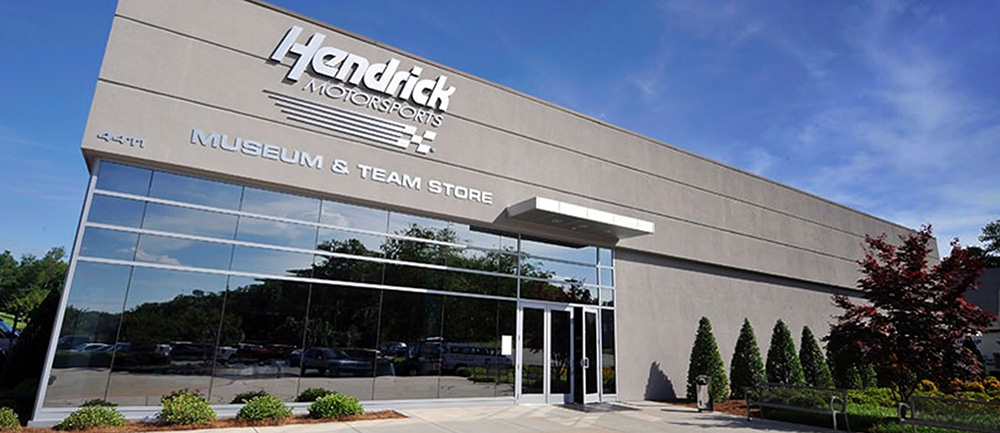DAYTONA BEACH, Fla. - The NASCAR season opens with a pair of races at drafting tracks with the DAYTONA 500 at Daytona International Speedway leading off and a race at Atlanta Motor Speedway to follow.
In the Next-Gen era with passing tough just about anywhere, never before have pit crews been more under the microscope, with every precious tenth of a second on pit road looming just as valuable as ones gained on the track.
In fact, pit road speeds have gotten so fast with single-lug tires, crews can change four tires long before cars are filled with fuel. And that's okay at most places, with teams willing to sacrifice a little bit of fuel in the interest of track position.
But, one exception to that mentality is racing at drafting tracks, particularly the series' biggest two - Daytona and Talladega Superspeedway. Racing in the pack often becomes a war of fuel saving and with that in mind, every, single drop of fuel is needed with crew chiefs holding drivers until a carrier's cans are completely empty.
So, for full-time fueler's like Landon Walker (No. 24 team) and Jacob Conley (No. 48 team), the DAYTONA 500 is their time to shine. The quicker and more smoothly a fueler can clear both cans of fuel, the faster his driver can get off pit road.
It brings with it added attention and certainly, added pressure as well.
"For me, honestly, it's easier because I know there's a specific amount that the car needs to get and they're actually going to wait on me," Conley said. "It's stressful because I don't have a lot of room for error but it's also nice to know that they're going to look at me because a lot of these tracks we go to, you don't want to waste time on pit road to take that extra half-second to make sure it's full. So, here, at least I know that I've got to be fast but I know (crew chief) Blake (Harris) is going to check off on me."
As Walker explained, the importance of getting cars full goes beyond the obvious possible consequences, such as potentially running out. Often, superspeedway races come down to one, final, gas-and-go pit stop and the more laps a driver has stretched out prior to that, the more laps he can go and the less fuel he'll need at the end.

"It all comes down to fuel, there's no question," Walker said. "Everything kind of revolves around it, especially as you get toward the latter laps of the race. We're trying to do the best job of minimizing time on pit road whether it be a fuel stop or a four-tire, two-can stop. It's going to come down to that fuel-only stop where you only need three seconds of fuel, just enough to finish the race. So, we've got to make sure we're in the right place at the right time, the driver is where he needs to be and we can connect it and make it work."
Both Conley and Walker are seasoned crew members by this point. Walker is in his 13th season while Conley is entering his 12th.
With that experience comes understanding and as Walker said, while his duties may be amplified by the conditions of the race this week, everyone on every team plays an integral part come race day.
“Daytona is so much fun for us because there are more eyes on us for the race but at the end of the day, we know the whole team is involved in helping the team succeed whether it be the set up of the car or making sure the wheels are tight, it’s a team effort,” Walker said. “We definitely get a little more attention because fuel is a big deal there but I try to put it in perspective and think about the fact that we all have to do our job.”
Just like superspeedway racing, the art of a fast pit stop continues to evolve. Time spent on pit road since the introduction of the Next-Gen car ahead of the 2022 season has continued to plummet, with teams routinely turning in sub-nine-second stops these days at most tracks.
With the onus on fuel this week, those kinds of times likely won’t be seen. But Conley and Walker both expect teams to pick up right where they left off in 2024, continuing to find ways to shave tenths in the pursuit of a perfect stop.
“We used to be aiming for two-and-a-half or three seconds on our exchanges. Now, they want them at two seconds or below,” Conley said. “You’ve got to cover that same amount of ground with the same amount of fuel and the can hasn’t gotten any lighter.
“For me, it’s just that emphasis on perfection. The car comes in and you’ve got to hit it right. Everything has to flow right. Everything has to go your way. Our guys, with as fast as we were at the end of (2024), I don’t anticipate them checking up to start this year.”





























